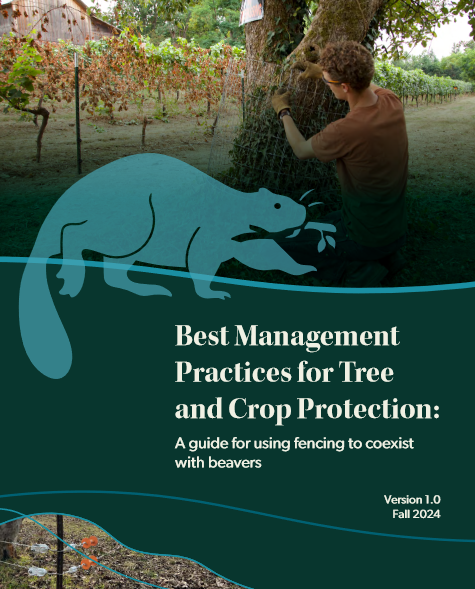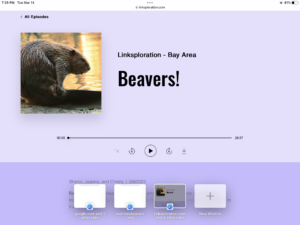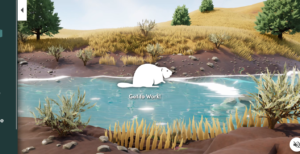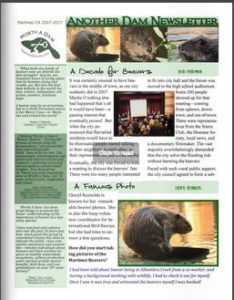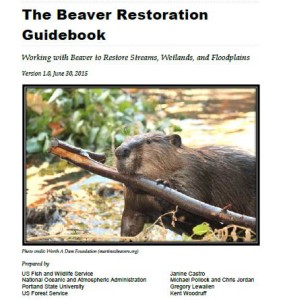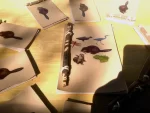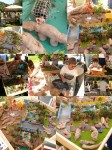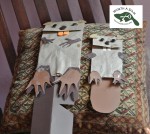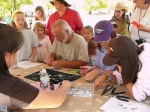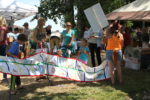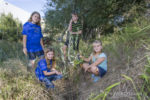There are lots of reasons to do the right thing.
Because it’s better for the world. or better for the people in it. Because it makes you feel better, Because you made a promise. Because it would hurt someone if you didn’t. Sometimes because its easier or cheaper in the long run than doing the wrong thing.
But one of my VERY favorite reasons to do the right thing is because you saw someone else do it first and it seemed good, and possible and you liked the way it made you feel.
Meet the new beaver peer pressure.
Resident wants beaver traps out of Katzie Slough
 Little by little, the Katzie Slough clean-up continues.
Little by little, the Katzie Slough clean-up continues.
Now, a Pitt Meadows resident wants the city to take another step and try to find a friendlier way of dealing with an animal that’s been part of the nation for centuries.
Instead of trapping the beavers, who can dam up water flow in the slough, leading to flooding of nearby land, Jackie Campbell is asking the city to consider another option and pointing to a nearby neighbour as an example.
Port Moody is trying out a flow device or a pipe that will lower the water level near a beaver dam in Suter Brook Creek, by city hall.
I’m convinced that one of the reasons cities are so reluctant to do the right thing is that all the mayors have lunch and swap stories and are afraid it will catch on – next thing you know Concord will want beavers, and then Walnut creek. Doing the right thing is contagious and our friends Jim and Judy Atkison have started a movement.
Campbell acknowledges that such a device will take more time and effort.
“But this is where we want to go to be more wildlife friendly and safer,” Campbell said previously in a letter to the City of Pitt Meadows.
“Many groups and the Katzie [First Nation] are working hard to attract the public to the slough to appreciate and understand all it can be.”
Apart from the cost to beavers, which drown when a trap holds them underwater, Campbell is concerned about the safety of people and their pets along the slough.
“Wake up,” she said.
“The city will suffer the embarrassment of causing this danger to the public for using this tortuous method of stopping beavers. There are new ways to allow the dams to flow. We must learn to live with the wildlife around us.”
Jack Emberly, a local environmentalist, said modern technology is “finding ways to live with them … trying to find a better way, a more progressive way to work with wildlife.”
Hurray for people wanting to work with beavers because its more humane! That’s a great starting place that appeals to many people. But my favorite reason to work with beavers is because its good for us and our creeks and our wildlife. Because humans need clean water. Because it can lead to such important long-term benefits for our water and our planet.
Pitt Meadows operations superintendent Randy Evans said that the city’s flat terrain makes it easy for flooding to occur.
He has asked if engineers would sign off on such flow devices or pipes, but none so far is willing to do so and risk liability from possible flooding.
Such pipes could easily clog up, which could lead to flooding, he added.
“The device, when I looked at them, they’re very specific for certain locations.”
He added that the city tries to discourage beavers by wrapping trees trunks in protective material and by demolishing beaver dams, often several times, in the hope that beavers will move on.
“Trapping is the last alternative that we use.”
Well okay Randy Evans – we expected this kind of quote from you. And I’m glad trapping is your last option. We just need to refine your definition of LAST. How about you try a well-installed flow device first and then if it doesn’t work you can bring in the traps.
It can be your new ‘last’. First try it the right way.
 You know, like Chelan sherriff yesterday in Washington state which posted these photos of their work saving the beaver that crossed the road which he wisely guided with a snow shovel instead of his fingers.
You know, like Chelan sherriff yesterday in Washington state which posted these photos of their work saving the beaver that crossed the road which he wisely guided with a snow shovel instead of his fingers.
Well done officer!


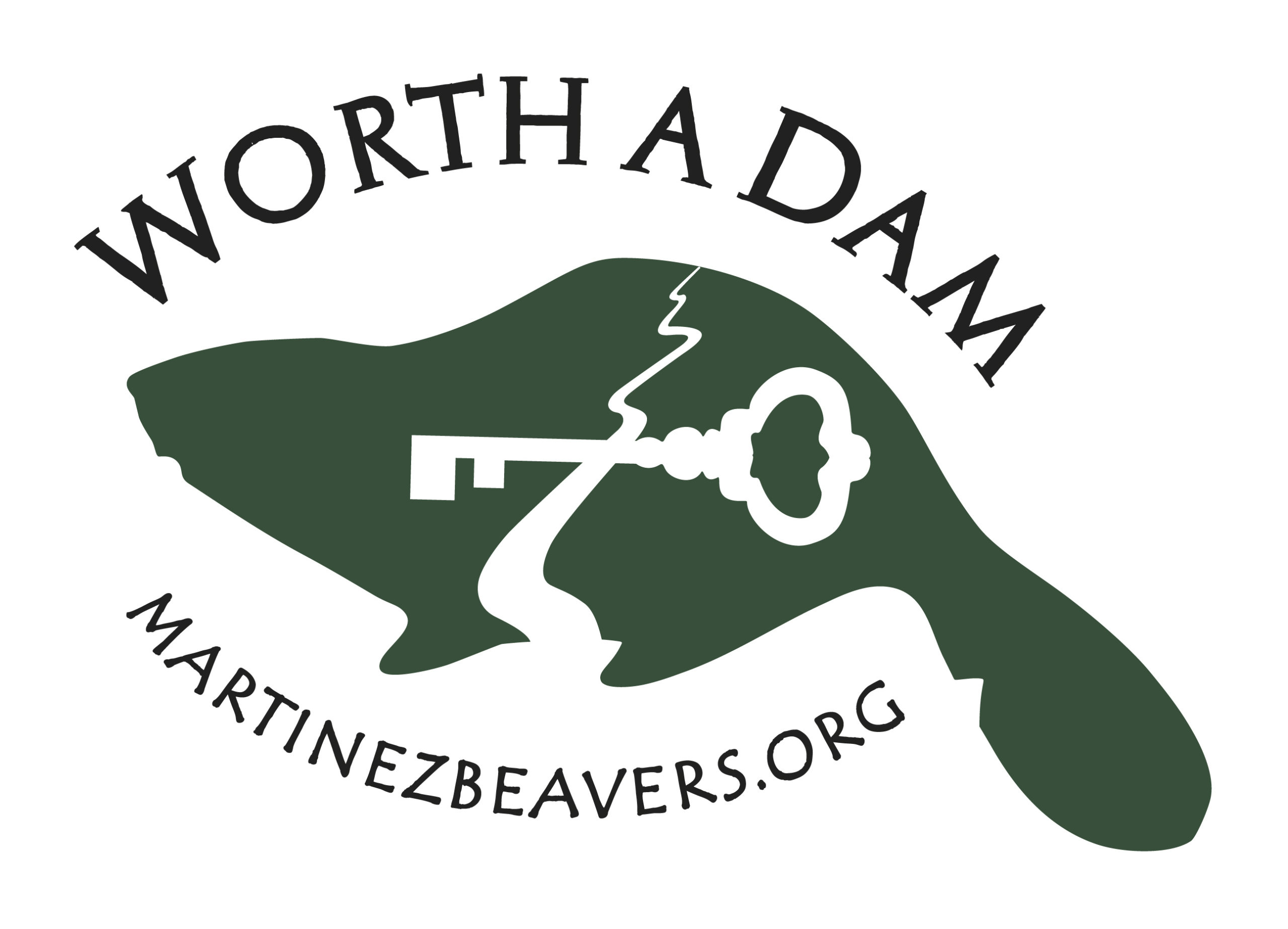

 Torrey Ritter, an FWP beaver specialist, says the streams and rivers in the West look very different than they did before Europeans settled the west and brought grazing animals with them. Once the beaver fur trade took off and trapping and shooting beavers became an integral economic puzzle piece, what were once winding, interconnected waterways with wide floodplains gradually turned into straighter, narrower and faster streams.
Torrey Ritter, an FWP beaver specialist, says the streams and rivers in the West look very different than they did before Europeans settled the west and brought grazing animals with them. Once the beaver fur trade took off and trapping and shooting beavers became an integral economic puzzle piece, what were once winding, interconnected waterways with wide floodplains gradually turned into straighter, narrower and faster streams.
 Slower-moving water also provides greater recharge for nearby groundwater sources. Since the dammed stream takes less sediment with it and meanders more, it allows for greater absorption into the water table and reduces erosion along nearby banks.
Slower-moving water also provides greater recharge for nearby groundwater sources. Since the dammed stream takes less sediment with it and meanders more, it allows for greater absorption into the water table and reduces erosion along nearby banks. And, since so much of western Montana’s streamflow comes through mountain snowmelt, beaver dams built in mountain streams help to moderate the rate of flow, meaning more water later into the warmer months.
And, since so much of western Montana’s streamflow comes through mountain snowmelt, beaver dams built in mountain streams help to moderate the rate of flow, meaning more water later into the warmer months.
 Dunawi creek is near Covalis Oregon and prides itself in being a little more ecofriendly than other creeks.
Dunawi creek is near Covalis Oregon and prides itself in being a little more ecofriendly than other creeks.  lovingly named “Beaver strike team” partnered with Jakob Shockey of
lovingly named “Beaver strike team” partnered with Jakob Shockey of 





 Mossom Creek Hatchery along with Foster. “What we want to know is if they (beaver advocates) are in this for a long time.”
Mossom Creek Hatchery along with Foster. “What we want to know is if they (beaver advocates) are in this for a long time.” As if it wasn’t enough to be on national news, the Port Moody beavers and their hard-working champions have also made it into the local front page. Judy wrote that they had their first, three hour beaver management meeting yesterday with the city, and she is cautiously optimistic. (Given that she is truly Canadian, that I have to say that sounds pretty cautious.)
As if it wasn’t enough to be on national news, the Port Moody beavers and their hard-working champions have also made it into the local front page. Judy wrote that they had their first, three hour beaver management meeting yesterday with the city, and she is cautiously optimistic. (Given that she is truly Canadian, that I have to say that sounds pretty cautious.)




